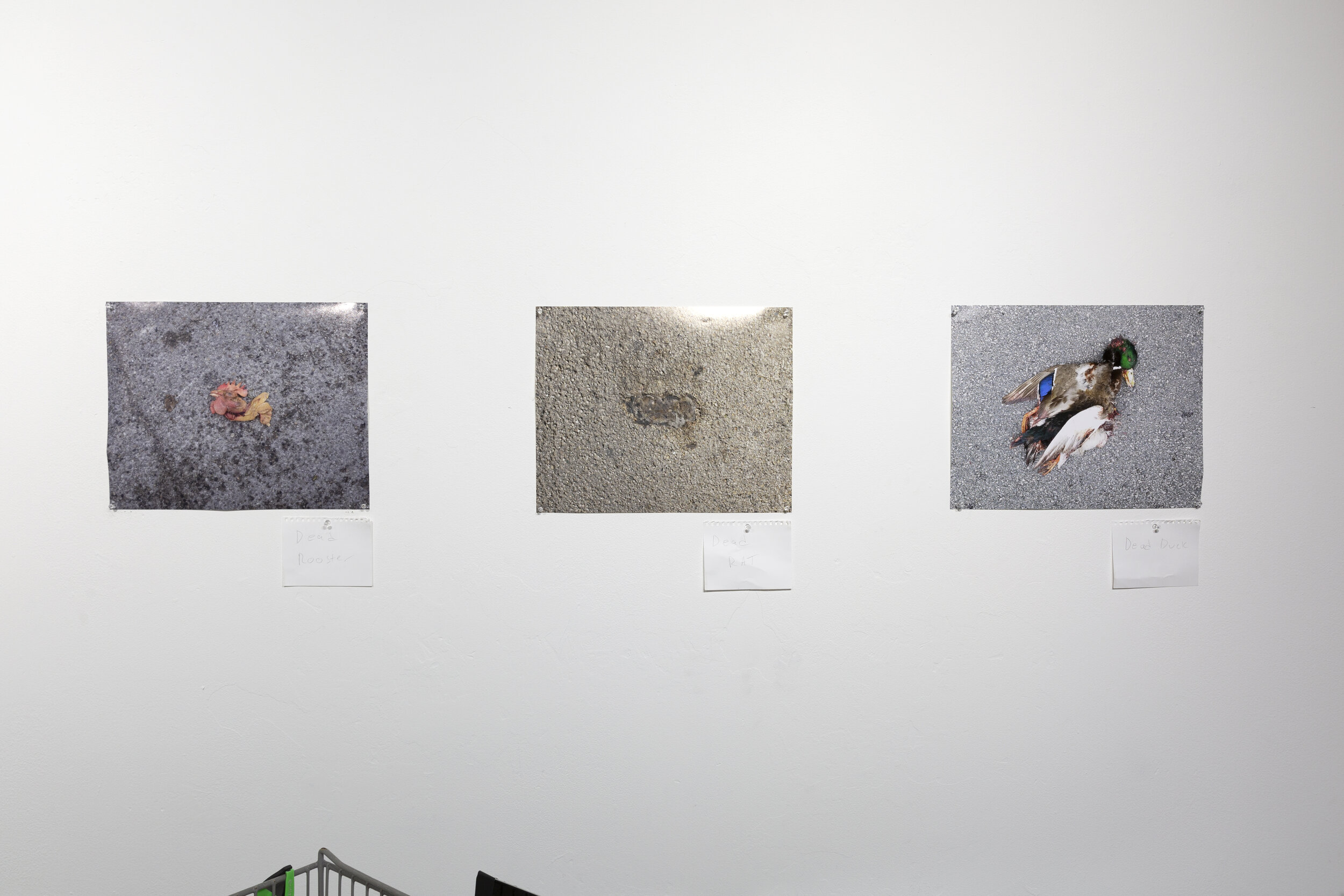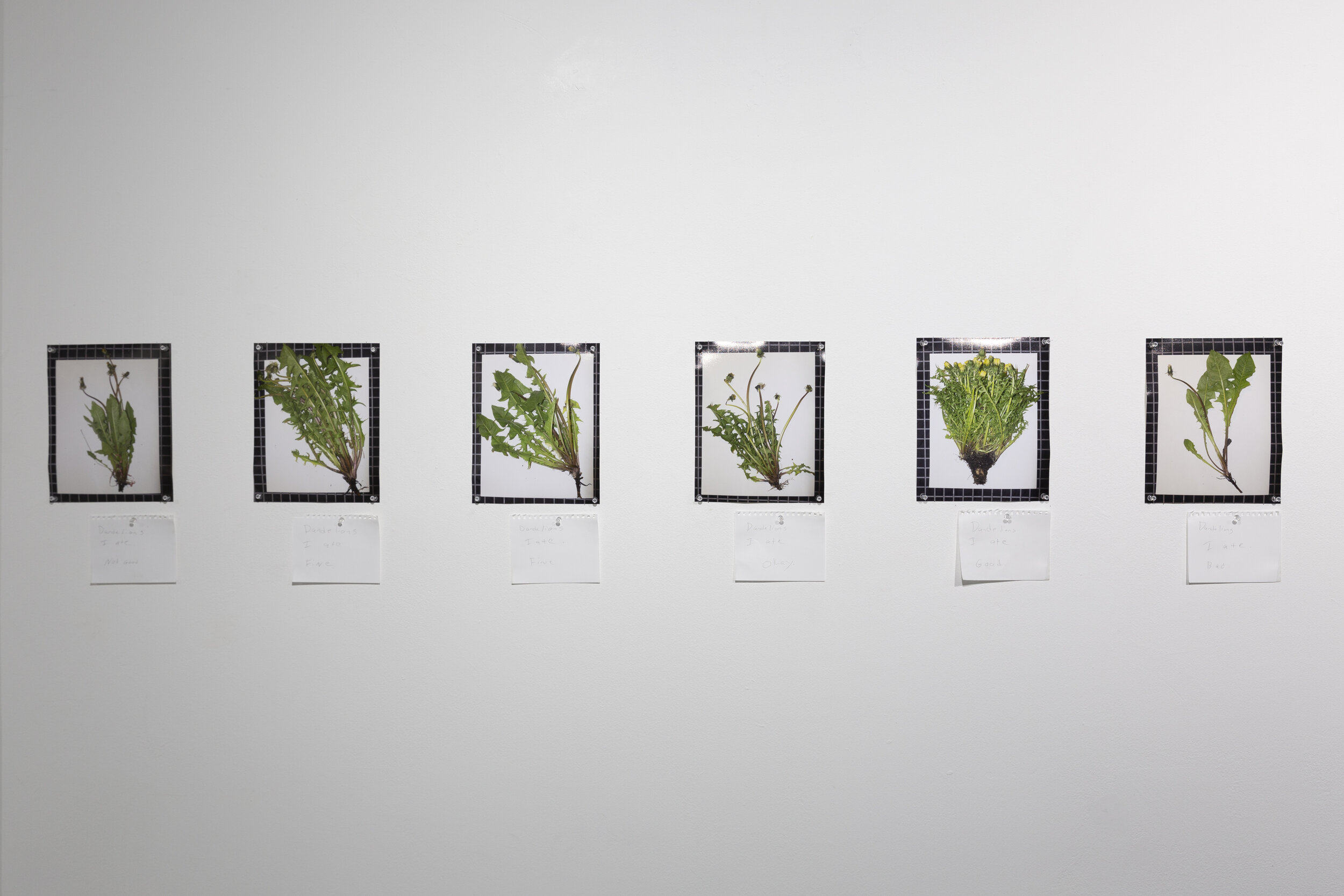Messier Objects
M1 - M15
My vision was a long time coming / I squinted through my Panasonic lens / I transferred what I [knew] / Through my telescope / I saw a soft belly and a man’s hands / the body of a man photographed where it is soft / I saw a cornice / or a cornerstone of light / a three dimensionality skittering around the confines of a room / I saw a year of faces delivered to my doorstep / I saw a holy place / a ritual locale / and I never stopped believing / You my progeny of objects / would deface or decode me
M16 - M24
I saw nebulae as points of confusion and frustration / I gritted my teeth [eye] against its glass / I came away marked with a moon in each socket / I became a man marked from the act of looking / I made pictures slick on the edges so their [messes] held up in the heat of each print / in the 111th exposure / I printed a cityscape on muslin / I exposed one bloodline to each side of cloth / my bloodtie rubbed against its weave
M25 - M27
I counted / [M25, M26, M27…] / I nodded off
M28 - M33
I tilled the heavens for non-comet objects / I scoured the dang thing / I went trawling / And my gaze was a bullet [I bore a hole in the chin of the earth] / I shot my gaze out / and watched it return to each eye
M34 - M36
A photograph is an unpredictable image / every time you click it jets away from you / the vista shutters, peaces out
M37 - M45
I saw the body of my progeny / flung up into the big part of my own head / I saw the edges of my box / I saw my lover’s silhouette against the lake / I saw the distributions of our fates, right there, distributed in the boxes of our junk / I saw the shape of my lover when he shook his long hair out / changed the sheets on the bed / pulled back the latch on the door / and threw crumbs to the fish there
M46 - M58
I preached in the afternoons / from Tabernacle Number One / When the crowds began to come / I drove us North to Waukegan / where our shoals would soon splinter [and grow uncertain] / I imported a lace mill from England / When I unfurled the soft hem of our city / I placed the streets at tight angles / I made the city like the Union Jack / I flexed a flag into a town, then I folded it back / I questioned the quality of our lines / I grew old but harbored no regret
M59 - M66
I framed myself good / as the century spilled over / I rubbed the blur from my eyes / I put the carbon up there / it made each non-comet object / rarer [more obscure] and smudgier / more beautiful / and difficult to discern
M67 - M71
I wavered / I devoured each terminal image / I developed pictures in my gut / that was how I wrung the stars out / fiber
M72 - M76
I believe in the land of my lover / I have faith in its democratic impulse / I put my body next to his / and we slept / and woke up to chat about the future
M77 - M85
I crossed a cluster off the list / I wrung an image of a bed from the heavens / I put the ephemerides between the baseboard and the mattress/ I left the non-comet objects in the sink / I poured the deep-sky objects down the drain / In the wrinkles of our sheets / I saw the Cooling Tower take shape beneath me / and I covered my lover’s shoulders / with a tigerskin cloth
M86 - M94
I stroked the sides of my box / I shone a beam of light on its edges / I put the purchases in a wheeling cart / that I dragged around the streets / I delivered gazes to each doorstep / I rendered faces in black and white / I printed on a substrate that wrinkled [but stuck around] / I never left Hotel de Cluny / I nodded off
M95 - M110
I wept in reverse / the tears assembled themselves back into my eyes / when we moved to Chicago / I arranged myself splay-legged behind the full mirror / I was beautiful and confusing / I put the lens of my telescope to the soft part of my lover’s belly / that was how I made it night / I clicked the shutter / I pressed the icon / I rose up singing / I gave up drinking / I cussed, but only softly, and in my sleep / Were comets [random visitors] / were photographs [six-tailed objects passing in the night] / or were they [ours]
Text by Leah Gallant
Participating Artists:
Travis Mitzel (American, 1989)
Explorations of No Space, 2019
Cart, objects, prints, various dimensions In Bruno Latour’s book Down To Earth, the planet is described as a world without space. Earth with no more frontiers or new landscapes. A world with nowhere to run. This will be increasingly problematic in an era of catastrophic climate change. Explorations of No Space examines the absence of the common world and how an individual could survive, remediate, and document a toxic landscape.
travismitzel.com
Stephanie Schwiederek (American, 1990)
A Tendency Toward Fever, 2018-2019
Archival inkjet prints, various dimensions “Reasonable Sentiment: Everything works out, but nothing lasts. Amorous Sentiment: Nothing works out, but it keeps going.” (Barthes, A Lover’s Discourse, 1977). A Tendency Toward Fever documents my relationship with my partner Dennis through staged photographs. Since moving from the East coast we have found much difficulty in finding solace in one another and our new space. I am concerned with the notions of intimacy, familiarity, masculinity and femininity presented and assumed, and the idea of contentment.
schwiederek.com
Efrat Hakimi
Israeli, 1982
Zions, (Chapter 1, Illinois) 2019
video installation
‘Zion was everywhere but Zion’ (Altneuland,Theodor Ze’ev Herzl, 1902).
Once utopian destination(s) for social imaginaries and devotional fantasies, multiple Zions were realized in the 20th century. Chapter 1 explores the city of Zion, Illinois, as a site of religious narratives and nuclear nightmares. Founded in 1901 by the evangelist preacher John Alexander Dowie, Zion was once a center of advocacy for flat earthers and later the home of a dual reactor nuclear power station. The nuclear power station was retired in 1998, but the decommissioning of Zion continues.
efrathakimi.com
Ed Oh
American, 1992
Artificial Imagination, 2017-2019
Archival newsprint and resin casts, various dimensions
The portrait photography found on the cover page of Chicago Tribune’s Inside Shopper and I made contact. Found in stacks, every issue circulates on Sunday, featuring a different portrait. Using a 52-week archive of cover pages, I produce multiple “sights” of the archive. Ever since we first made eye contact, the Inside Shopper has stared back at me.
edyoh.com
Sage Stafford (American, 1993)
Selling the Old, Buying the New, 2019
inkjet prints, various dimensions
In this cultural moment during which revealing the body is popular I investigate the notion of modesty and question how this materializes in my wardrobe. This series of photographs documents the change in my
attire after marriage to a Muslim man. While trends in modern day fashion expose the body, I hunt to find plus-size clothing that covers my own, using online shops as a platform for finding and selling clothes. These
images question garment construction and their varying levels of modesty while speaking to the necessity of utilizing broader online clothing markets.
sage-stafford.com
L Koo (American, 1990)
Site Conditions (of PST and spaces one, II, and three), 2019
Silver gelatin prints, paper, objects, lemons
In this series of conditions, there are multiple conversations that begin, overlap, and draw upon each other, as well as a number of outside spaces. Irwin’s term of ‘site-conditioned work,’ or, ‘conditional art’ is drawn
upon as a rough outline, beginning to point towards this present site as space. But there are also others: the space of the photographs, the space in the photographs, the spaces before the sites. This layering of space becomes not only about place, but also exists as a function of time that all converge together here, to create new space.
Curated and organized by Jan Tichy, and the School of the Art Institute of Chicago Photography Department





















